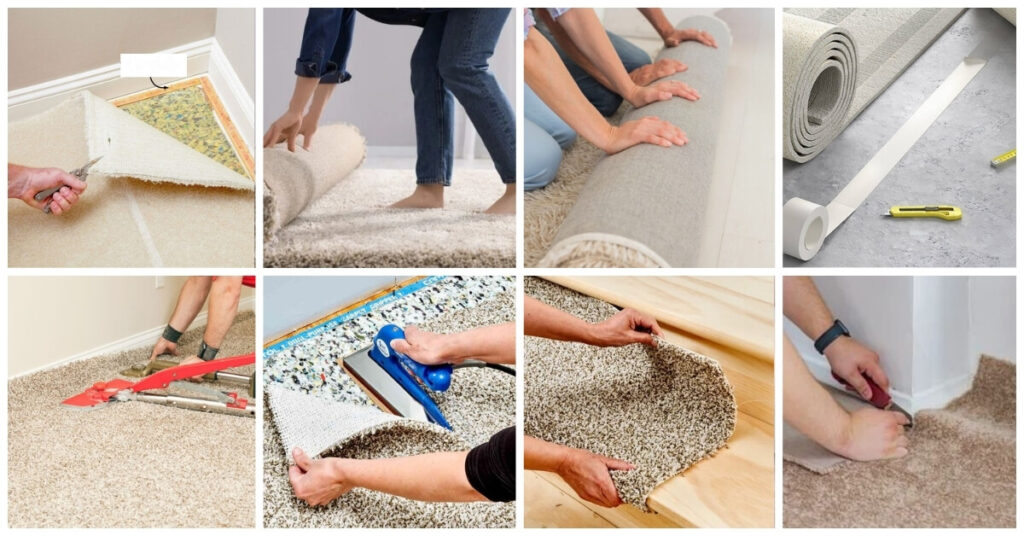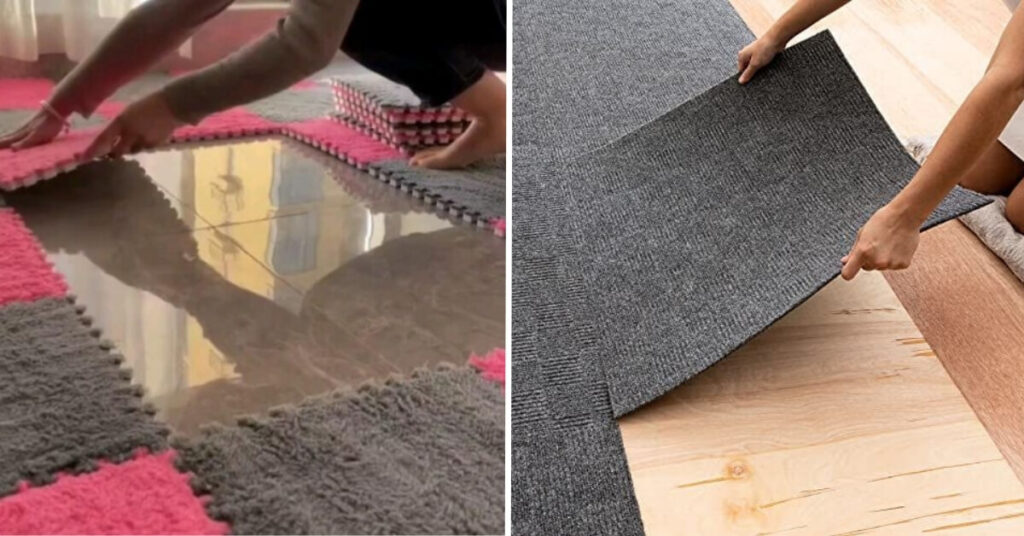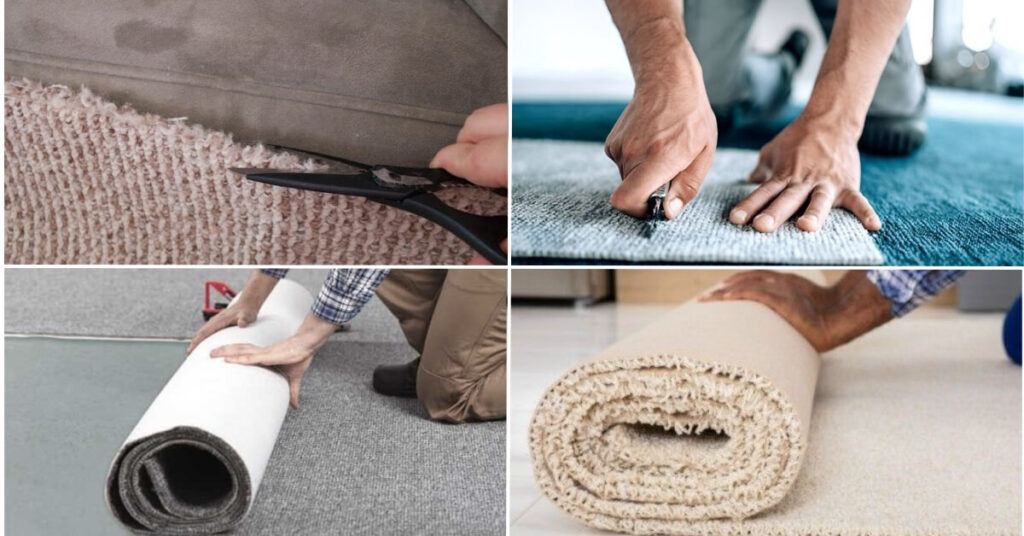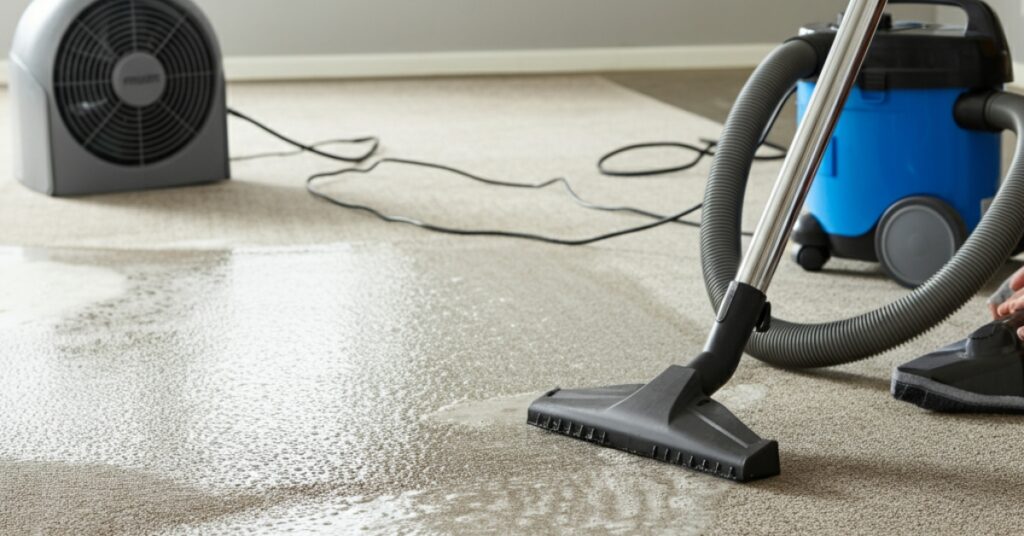As an Amazon Associate, I earn from qualifying purchases.
Replacing carpet is a common home improvement project that many homeowners face, but understanding how long does it take to replace carpet can help you plan accordingly. The typical carpet replacement process takes anywhere from one to three days for an average-sized home, depending on various factors such as room size, preparation requirements, and the complexity of the installation.
Several elements influence the timeline for carpet replacement, including the removal of existing flooring, subfloor preparation, and the type of carpet being installed. Additionally, factors like furniture moving, room accessibility, and whether you’re working with professional installers or tackling the project yourself can significantly impact the overall duration.
Factors That Affect Carpet Replacement Time

Room Size and Layout
The size of the area being carpeted directly impacts how long the replacement will take. A standard bedroom measuring 10×12 feet typically requires 4-6 hours for complete carpet replacement, while larger spaces like living rooms or open floor plans can take 8-12 hours or more.
Complex room layouts with multiple angles, closets, or built-in features require additional time for precise measurements and cutting. Rooms with irregular shapes or numerous obstacles like radiators, built-in cabinets, or stairs can add several hours to the installation process.
Carpet Removal Requirements
Removing existing carpet is often the most time-consuming part of the replacement process. Standard carpet removal from a typical room takes 2-4 hours, depending on how well the carpet was originally installed and whether the padding is glued down or stapled.
Carpet that has been glued directly to the subfloor presents additional challenges and can extend removal time significantly. In some cases, stubborn adhesive removal may require special tools and solvents, adding several hours to the project timeline.
Professional vs. DIY Carpet Installation Timeline
Professional Installation Process
Professional carpet installers typically complete residential carpet replacement more efficiently than DIY approaches. A professional team can usually replace carpet in a standard three-bedroom home within 6-8 hours, spread across one or two days depending on scheduling and preparation requirements.
The professional installation process includes precise measurements, efficient removal techniques, proper subfloor preparation, and expert installation methods that minimize waste and ensure proper fit. Additionally, professionals have specialized tools that speed up the installation process significantly.
DIY Installation Considerations
DIY carpet replacement generally takes 2-3 times longer than professional installation due to the learning curve and lack of specialized equipment. A homeowner replacing carpet in a single room should expect to spend 8-12 hours spread across a weekend, assuming no major complications arise.
However, DIY installation allows for flexible scheduling and can result in significant cost savings. Many homeowners find the process manageable with proper planning and the right tools, though the time investment is considerably higher than hiring professionals.
Step-by-Step Carpet Replacement Timeline
Day One: Preparation and Removal
The first day of carpet replacement typically focuses on preparation and old carpet removal. This phase includes moving furniture, removing baseboards if necessary, and completely removing the existing carpet and padding. Most rooms require 3-5 hours for complete removal and cleanup.
Subfloor inspection and preparation also occur on day one. This involves checking for squeaks, loose boards, or damage that needs addressing before new carpet installation. Proper subfloor preparation is crucial for long-term carpet performance and may add 1-2 hours to the timeline.
Day Two: Installation and Finishing
New carpet installation usually begins on the second day with laying the carpet pad, followed by measuring, cutting, and installing the carpet itself. A standard room installation takes 4-6 hours, including time for proper stretching and trimming.
Finishing touches include reinstalling baseboards, replacing transition strips, and conducting a final cleanup. These final steps typically require an additional 1-2 hours but are essential for a professional-looking result.
Different Carpet Types and Installation Times
Standard Cut Pile Carpets

Cut pile carpets, including plush and textured varieties, represent the most common carpet type and typically require standard installation times. These carpets are relatively straightforward to install and don’t require special techniques that would extend the timeline significantly.
The installation process for cut pile carpets follows conventional methods, making them ideal for homeowners seeking predictable timelines. Most professional installers can complete cut pile carpet installation efficiently within the standard time estimates.
Loop Pile and Berber Carpets
Loop pile carpets, including Berber styles, may require additional time due to their construction and directional requirements. Proper pattern matching and careful handling during installation can add 10-20% to the overall installation time.
These carpet types also require more precise cutting techniques to prevent unraveling, which can slow down the installation process. However, the additional time investment often results in superior durability and appearance when properly installed.
Specialty Carpets and Custom Installations
Specialty carpets such as those with intricate patterns, custom borders, or unique textures may require extended installation times. Pattern matching and special cutting techniques can double the installation time compared to standard carpets.
Custom installations involving multiple carpet types, inlays, or artistic designs require expert craftsmanship and significantly more time. These projects often span multiple days and require careful planning to achieve the desired results.
Preparing for Carpet Replacement
Pre-Installation Planning
Effective planning can significantly reduce carpet replacement time. This includes selecting carpet and scheduling installation during optimal conditions, ensuring all materials are delivered before the installation date, and preparing the space by removing furniture and personal items.
Clear communication with installers about expectations, room access, and any special requirements helps prevent delays during the actual installation process. Additionally, having backup plans for unexpected issues can keep the project on schedule.
Furniture and Room Preparation
Moving furniture represents one of the most time-consuming preparation tasks for carpet replacement. Large, heavy items should be relocated at least one day before installation begins to allow installers immediate access to work areas.
Some professional installation services include furniture moving in their packages, which can save homeowners significant time and effort. However, valuable or fragile items should always be relocated by the homeowner to prevent potential damage claims.
Common Delays and How to Avoid Them
Subfloor Issues
Unexpected subfloor problems can add substantial time to carpet replacement projects. Common issues include squeaky boards, moisture damage, or uneven surfaces that require correction before carpet installation can proceed.
Regular home maintenance and pre-installation inspections can help identify potential subfloor issues early. Addressing these problems before installation day prevents delays and ensures better long-term carpet performance.
Material Delivery Problems
Delayed material delivery can completely derail carpet replacement schedules. This is particularly problematic when installation crews arrive ready to work but cannot proceed due to missing materials.
Confirming delivery schedules well in advance and having contingency plans for material delays helps maintain project timelines. Some homeowners opt to have materials delivered several days early to prevent last-minute complications.
Frequently Asked Questions
1. How long does it take to replace carpet in one room?
Replacing carpet in a standard bedroom typically takes 4-8 hours with professional installation, while larger rooms may require a full day. DIY installation generally takes 8-12 hours for a single room.
2. Can carpet replacement be completed in one day?
Yes, most single rooms can have carpet replacement completed in one day by professional installers. However, whole-house projects typically require 2-3 days depending on the home size and complexity.
3. How much time should I allow for carpet removal?
Carpet removal typically takes 2-4 hours per room, depending on the existing carpet type and installation method. Glued-down carpet may require additional time for adhesive removal.
4. Do I need to be home during carpet installation?
While not always required, being present during installation allows you to address questions and ensure work proceeds according to your expectations. Many homeowners prefer to be available at least during the initial setup and final walkthrough.
5. How long does carpet padding installation take?
Carpet padding installation typically adds 1-2 hours to the overall project timeline. Professional installers usually include padding installation as part of the complete carpet replacement service.
6. What time of day do carpet installers typically start work?
Most professional carpet installers begin work between 8:00 AM and 9:00 AM to maximize daylight hours and minimize disruption to neighbors. Starting early also allows for completion within a single day for most projects.
Final Verdict

Understanding how long does it take to replace carpet helps homeowners make informed decisions about timing and expectations. While most residential carpet replacement projects can be completed within 1-3 days, proper planning and realistic expectations ensure smoother project completion.
The key to successful carpet replacement lies in thorough preparation, clear communication with installers, and allowing adequate time for each phase of the project. Whether you choose professional installation or tackle the project yourself, understanding the timeline helps ensure satisfaction with both the process and final results.
As an Amazon Associate, I earn from qualifying purchases.




